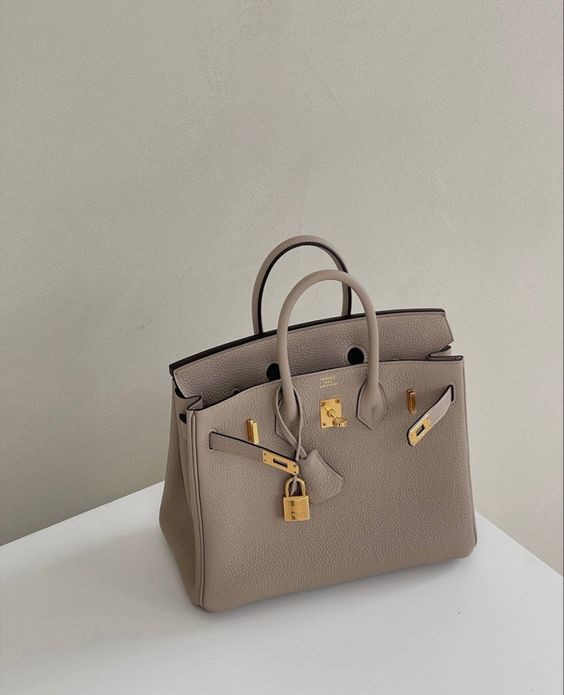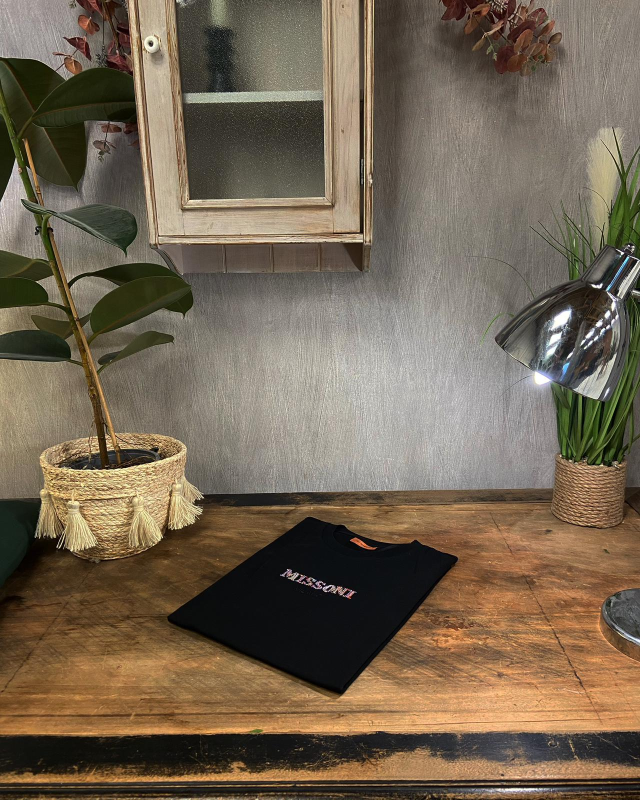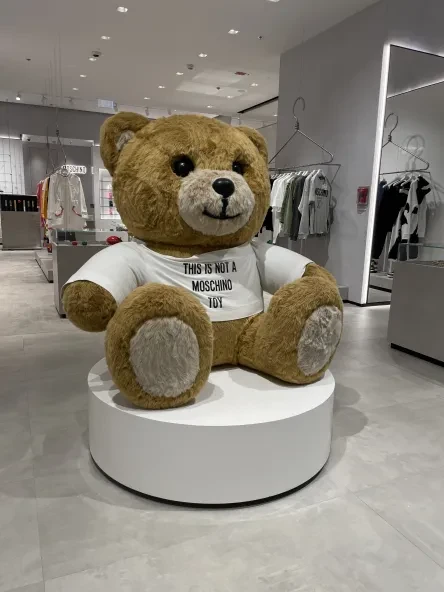The Ultimate Guide to Selling Your Designer Handbags: Tips and Tricks for Maximum Profit
Understanding the Market for Designer Handbags
Current Market Trends
Staying updated on market trends is crucial when selling
designer handbags. Popular brands and models can significantly influence resale
value. For instance:
● Chanel
Classic Flap and Hermès Birkin are consistently in high demand.
● Seasonal
trends also play a role; spring and fall often see higher sales volumes due to
fashion week influences.
Understanding these dynamics helps you gauge the right time
to sell.
Assessing Resale Value
Several factors affect the resale value of designer
handbags:
● Brand
and Model: High-end brands like Louis Vuitton, Gucci, and Prada generally
retain their value well.
● Condition:
Bags in pristine condition fetch higher prices compared to those with visible
wear.
● Rarity
and Exclusivity: Limited edition or discontinued models often command
premium prices.
Comparing resale values with original retail prices gives
you a realistic expectation of potential profit. For example, a Chanel bag
might retain 70% of its original price if well-maintained, while lesser-known
brands might only retain 30-40%.
Evaluating Your Handbag's Worth
Researching Designer and Model
Understanding the value of your designer handbag starts with
identifying the designer and model. Some labels like Hermès, Chanel,
and Louis Vuitton often fetch higher resale prices due to their strong
brand reputation. Specific models within these brands, such as the Hermès
Birkin or Chanel Classic Flap, are highly sought after and can
significantly increase your handbag's worth.
1. Identify
the Designer: Look for brand tags, logos, and unique hardware that indicate
the handbag's origin.
2. Model
Popularity: Research current market trends to see which models are in high
demand.
Condition Categories
Condition plays a pivotal role in handbag valuation.
Understanding the condition categories helps set realistic pricing
expectations:
● Pristine:
Looks brand new with no signs of wear. Often includes original packaging and
tags.
● Excellent:
Minimal signs of use, with all components intact and functional.
● Very
Good: Minor wear visible but no significant damage.
● Good:
Noticeable wear or minor defects that don’t affect functionality.
● Fair:
Significant wear or damage impacting appearance or use.
The condition directly impacts pricing; a pristine bag can
command a price close to its original retail value, while a fair-condition bag
may sell for much less.
Handbag valuation hinges on both designer reputation and
condition assessment. By accurately identifying these aspects, you position
yourself to set a competitive yet fair selling price.
Preparing Your Handbag for Sale
Gathering Accompanying Items
When preparing your handbag for sale, start by gathering all
accompanying items. These can significantly enhance the resale value and
attractiveness of your listing.
● Dust
Bags: Essential for protecting the handbag from dust and damage. Buyers
often seek bags with their original dust covers.
● Boxes:
Original boxes add authenticity and appeal to your listing.
● Authentication
Cards: Prove the handbag's authenticity and increase buyer confidence.
Cleaning and Documenting Condition
Presenting a clean and well-documented handbag is crucial
for attracting potential buyers.
Effective Cleaning Methods
1. Leather
Cleaner: Use a specialized cleaner suitable for the handbag's material.
2. Microfiber
Cloth: Gently wipe down surfaces to remove dust and grime.
3. Conditioner:
Apply a leather conditioner to keep the material soft and supple.
Taking Detailed Photographs
Quality photographs are key to showcasing your handbag:
● Lighting:
Use natural light or a well-lit room to capture clear images.
● Background:
Choose a plain, neutral background to highlight the handbag.
● Angles:
Take multiple photos from different angles, including close-ups of unique
features or any flaws.
● Documentation:
Include photos of accompanying items like dust bags, boxes, and authentication
cards.
By following these steps, you ensure that your handbag is
presented in the best possible condition, ready to attract potential buyers.
Choosing the Right Selling Platform
Reputable Luxury Resellers
Using
luxury resellers can streamline the selling process for your designer handbags.
These platforms typically handle authentication, pricing, and marketing, making
securing a sale easier. Popular platforms include:
● The RealReal: Known for its rigorous
authentication process.
● Vestiaire Collective: Offers a global audience and
strong brand reputation.
● Fashionphile: Specializes in high-end luxury
items and provides quick payouts.
Online Marketplaces
Selling directly on online marketplaces like Poshmark or
eBay allows you to reach a broad audience but requires more effort.
Poshmark:
Pros: User-friendly interface, social sharing
features.
Cons: Platform fees and shipping responsibilities.
eBay*:
Pros: Extensive reach, auction options for
competitive pricing.
Cons: High competition, potential for scams.
Tips for Effective Online Listings:
1. Use
high-quality photos with good lighting.
2. Write
detailed descriptions including brand, model, and condition.
3. Set
competitive prices based on market research.
Direct Sales Options
Social media platforms and classified ads offer direct sales
opportunities but come with their own set of challenges.
Social Media:
Pros: No platform fees, personal engagement with
buyers.
Cons: Requires strong personal branding and marketing
efforts.
Classified Ads (e.g., Craigslist):
Pros: Quick local sales, no shipping hassles.
Cons: Higher risk of scams, limited buyer pool.
Choosing the right platform depends on your
priorities—whether it's convenience, maximum profit, or speed of sale.
Crafting an Effective Listing
Presenting your designer handbag in the best possible light
can make a significant difference in attracting buyers and maximizing profit.
Taking Quality Photos
Quality photos are crucial. They serve as the first
impression potential buyers will have of your handbag.
● Good
Lighting: Natural light works best. Avoid harsh overhead lights that can
create shadows or artificial colors.
● Backgrounds:
Use a plain, neutral background to ensure the handbag stands out.
● Multiple
Angles: Capture photos from various angles, including front, back, sides,
and bottom.
● Close-Ups:
Highlight unique features such as logos, stitching, and hardware. Include
close-ups of any signs of wear or damage to maintain transparency.
Writing Detailed Descriptions
A detailed description complements your photos by providing
essential information that buyers are looking for.
● History:
Mention the purchase history if available. Details like the original store and
year of purchase can add value.
● Condition:
Clearly state the condition of the bag, whether it’s pristine, excellent, good,
or fair. Describe any wear or flaws honestly.
● Accessories:
List any accompanying items like dust bags, boxes, authentication cards, and
receipts. These can increase buyer confidence and potentially raise the selling
price.
● Measurements:
Provide accurate dimensions for height, width, depth, and handle drop.
● Material
and Color: Specify the type of leather or fabric used and describe the
color accurately.
Combining high-quality photos with detailed descriptions
ensures that your listing is both appealing and informative, enhancing your
chances of a successful sale.
Pricing Your Handbag Appropriately
Setting a fair price for your designer handbag is crucial
for attracting buyers and ensuring a successful sale. To start, market
research is essential. Look at similar listings on various platforms to
gauge the current selling prices for handbags like yours. Pay close attention
to:
● Brand
and Model: High-demand brands like Louis Vuitton or Gucci often command
higher prices.
● Condition:
Compare bags in similar conditions to set realistic expectations.
● Accessories:
Listings that include original dust bags or authentication cards may fetch
higher prices.
Transparency about wear or damage can build trust with
potential buyers. Clearly communicate the condition of your handbag by:
● Detailed
Descriptions: Mention any signs of wear, scratches, or discoloration.
● Photographic
Evidence: Provide close-up photos of any flaws to give buyers a clear
understanding.
This approach ensures that buyers feel confident in their
purchase, potentially leading to quicker sales and fewer returns. By setting a
fair price based on market research and being honest about the bag's condition,
you pave the way for a smooth and profitable selling experience.
Negotiation Tactics for Sellers
Effective negotiation strategies can help you get the best
value for your designer handbag while ensuring a smooth transaction. Here are
some key tactics to consider:
Being Open to Offers
Setting a minimum price before entering negotiations can
give you a clear boundary and avoid underselling your handbag. This minimum
price should be based on thorough market research and the condition of your
item.
● Be
Flexible: While holding firm on your minimum price, remain open to
reasonable offers. Flexibility can encourage potential buyers to engage more
seriously.
● Respond
Promptly: Quick responses show professionalism and eagerness to sell, which
can positively influence buyers.
Maintaining Professionalism During Negotiations
Respectful communication with potential buyers is crucial
for maintaining a professional image and fostering trust.
● Polite
Language: Use courteous language even if an offer is below your
expectations. A polite decline keeps the door open for future negotiations.
● Clear
Information: Provide detailed explanations for your pricing, emphasizing
the handbag’s features, condition, and market value.
● Stay
Calm: Maintain composure during tough negotiations. Emotional reactions can
deter potential buyers.
By being open to offers and maintaining professionalism
throughout the negotiation process, you can maximize your chances of securing a
profitable sale while building a positive reputation as a seller.
Ensuring Safe Transactions
Ensuring the security of your transactions is crucial when
selling designer handbags. Here are some key tips:
Choosing Secure Payment Methods
Opt for platforms that prioritize payment security. Some
highly recommended options include:
● PayPal:
Known for its buyer and seller protection policies, PayPal offers a secure way
to handle transactions.
● Venmo:
While convenient, ensure you're familiar with its security measures and use it
primarily for trusted buyers.
● Escrow
Services: Platforms like Escrow.com act as a neutral third party to hold
funds until both parties are satisfied with the transaction.
Each of these methods provides varying levels of security,
so choose the one that best suits your needs and comfort level.
Safety Tips for In-Person Transactions
For those preferring face-to-face sales, safety should be a
top priority:
● Meet
in Public Places: Opt for well-lit, busy areas such as coffee shops or
shopping malls. Many police stations offer designated safe zones for online
transactions.
● Bring
a Friend: Having someone accompany you can provide an additional layer of
security.
● Avoid
Sharing Personal Information: Keep communication through the selling
platform and avoid disclosing personal details like your home address.
By following these guidelines, you can significantly reduce
the risk of scams and ensure a secure transaction process.
When to Seek Professional Help
Identifying High-Value Handbags
High-value handbags often require specialized knowledge for
accurate valuation and successful sales. Here are some characteristics that can
help you identify valuable handbags:
● Prestigious
Brands: Bags from iconic brands like Hermès, Chanel, and Louis Vuitton are
usually considered high-value items.
● Limited
Editions: Limited edition or rare models typically have higher resale
values.
● Condition:
Pristine or gently used bags tend to sell for more on the market.
● Materials
and Craftsmanship: High-quality leather, unique hardware, and exceptional
craftsmanship can significantly increase a bag's worth.
For instance, a Hermès Birkin or a Chanel Classic Flap Bag
consistently ranks among the most sought-after luxury items due to their
timeless appeal and superior quality.
Benefits of Professional Reselling Services
Using professional resellers can offer several advantages:
● Expert
Valuation: Professionals can provide accurate pricing based on current
market trends, ensuring you get the best return on your investment.
● Broad
Market Exposure: Established resellers often have a vast network of buyers
and a strong online presence, increasing the chances of a quick sale.
● Authenticity
Verification: Expert resellers can authenticate your handbag, adding
credibility and boosting buyer confidence.
● Handling
Logistics: From photographing your bag to managing negotiations and
shipping, professional resellers take care of all the intricate details.
Platforms like Fashionphile or The RealReal specialize in
luxury items, providing services that simplify the selling process while
maximizing your profits.
Conclusion
Selling your designer handbags can be both rewarding and
profitable. With the knowledge from this guide, you're now ready to navigate
the resale market with confidence.
Key steps for selling success:
● Understand
the Market: Stay informed about current trends and popular models.
● Evaluate
Your Handbag's Worth: Research thoroughly to determine a fair price.
● Prepare
Your Handbag for Sale: Ensure it's clean and well-documented.
● Select
the Right Platform: Choose the best selling avenue for your needs.
● Create
an Effective Listing: Highlight your handbag’s features with quality photos
and detailed descriptions.
● Price
Appropriately: Base your pricing on research and transparency.
● Negotiate
Wisely: Be open yet firm in discussions with buyers.
● Ensure
Safe Transactions: Prioritize secure payment methods and safe meeting
points.
● Seek
Professional Help if Needed: Consider experts for high-value items.
With these selling success tips in mind, take the
first step towards maximizing your profit. The insights provided by "The Ultimate
Guide to Selling Your Designer Handbags: Tips and Tricks for Maximum
Profit" are designed to support you every step of the way. Happy selling!



